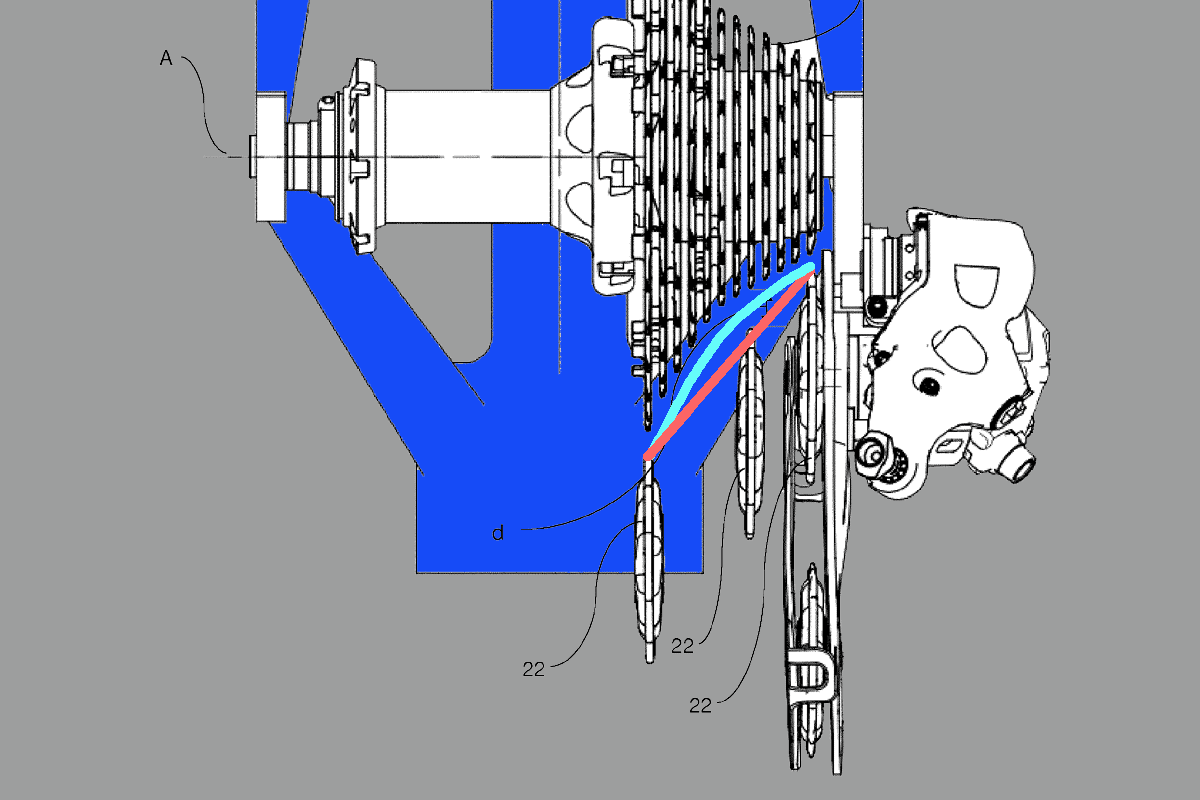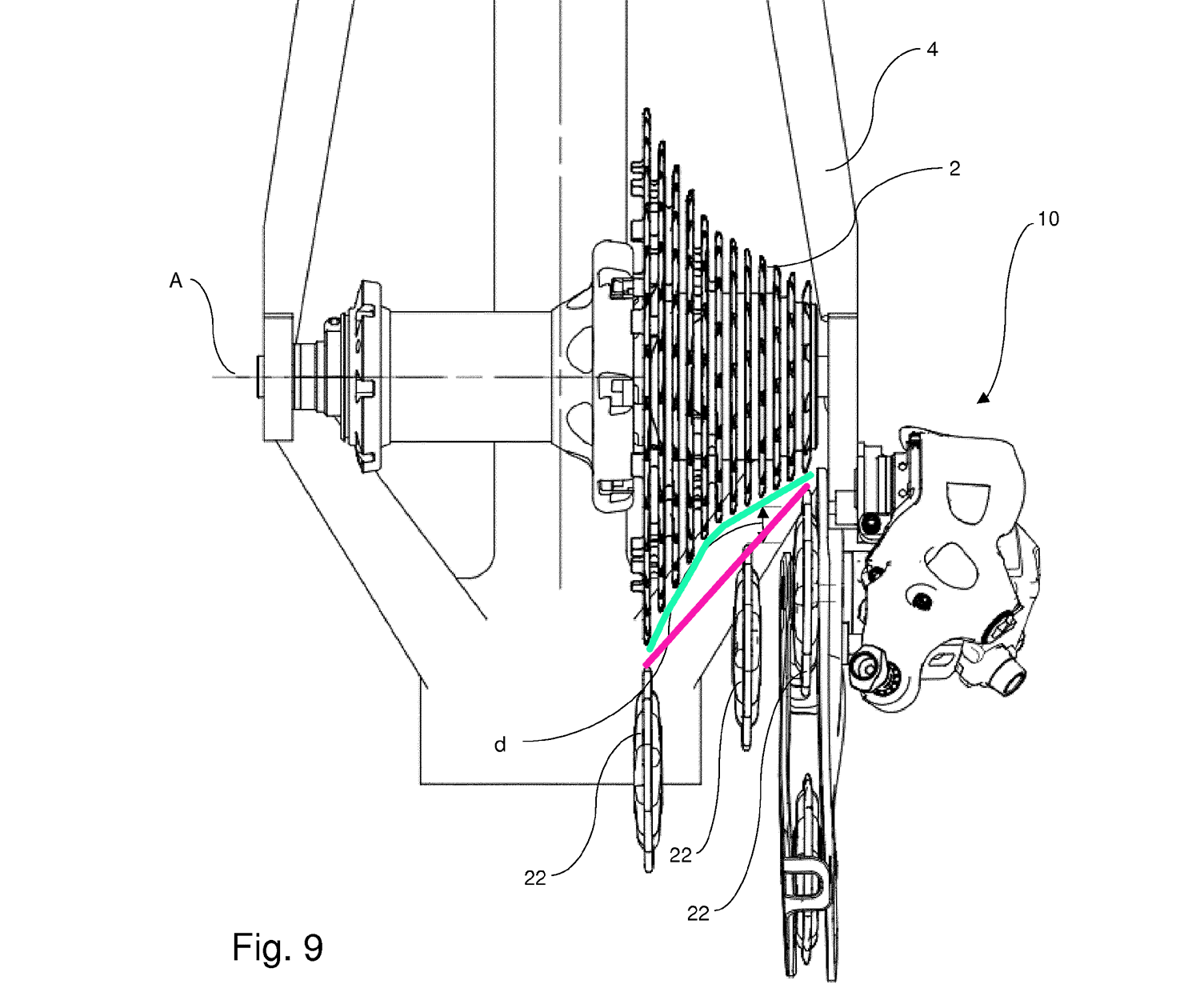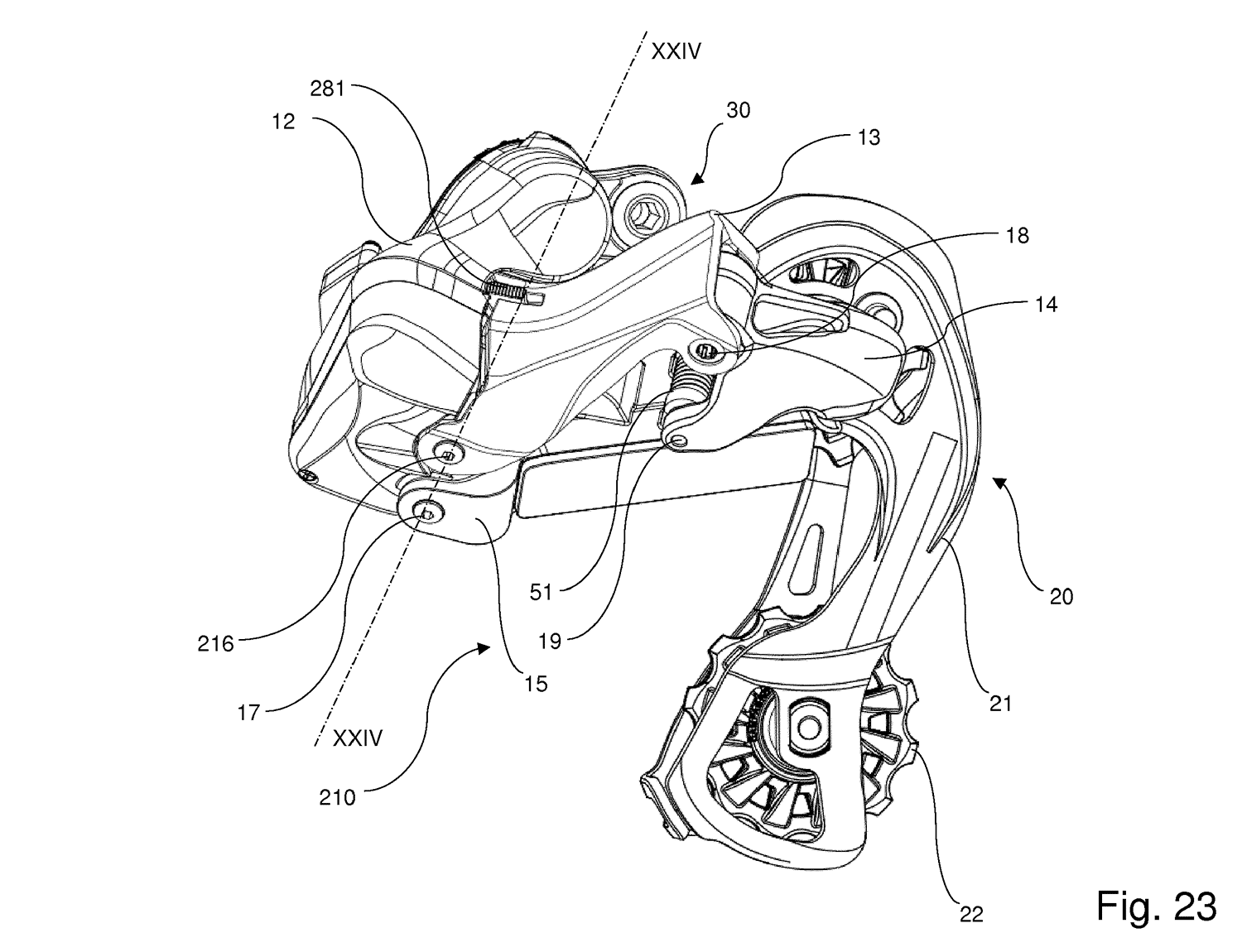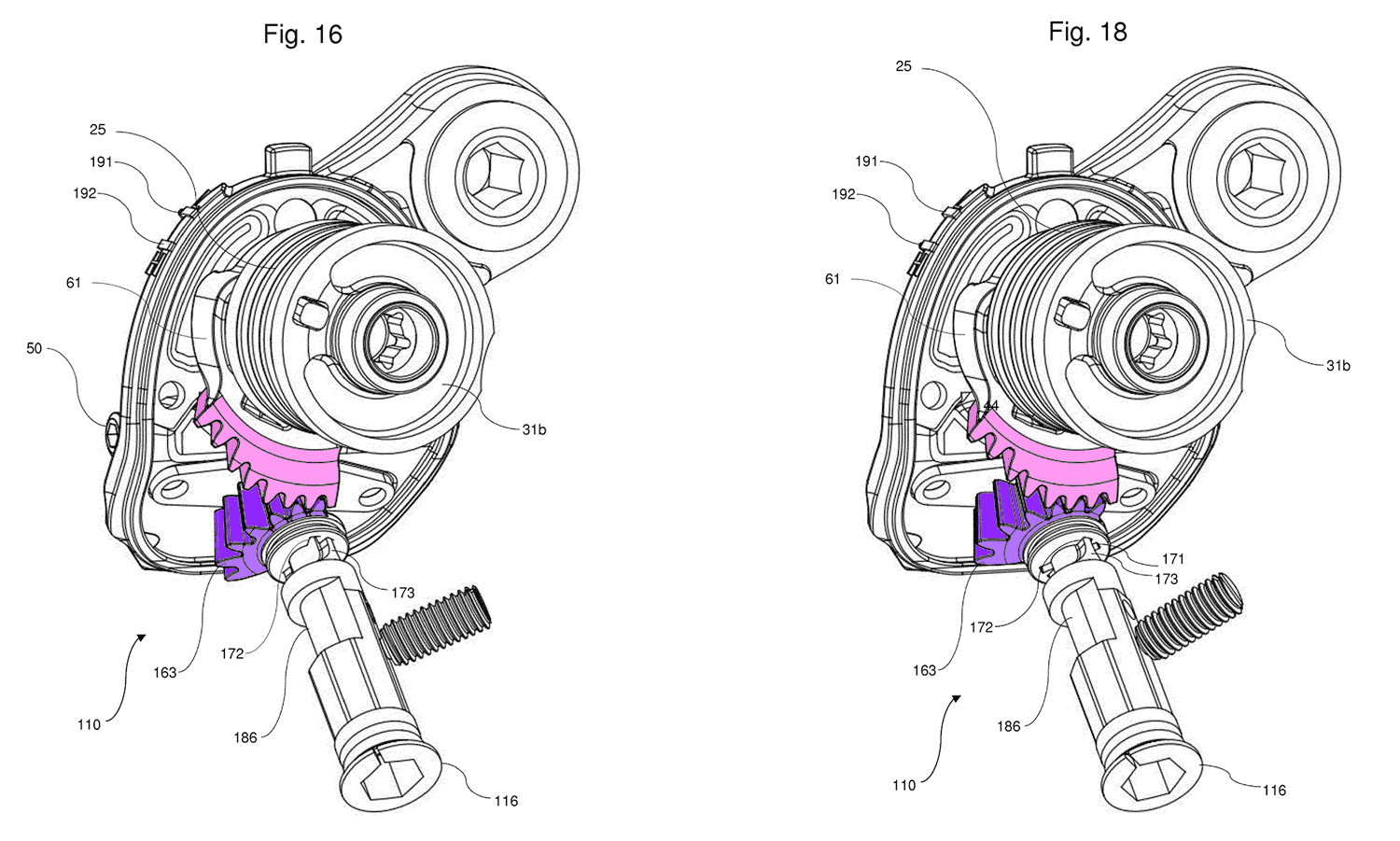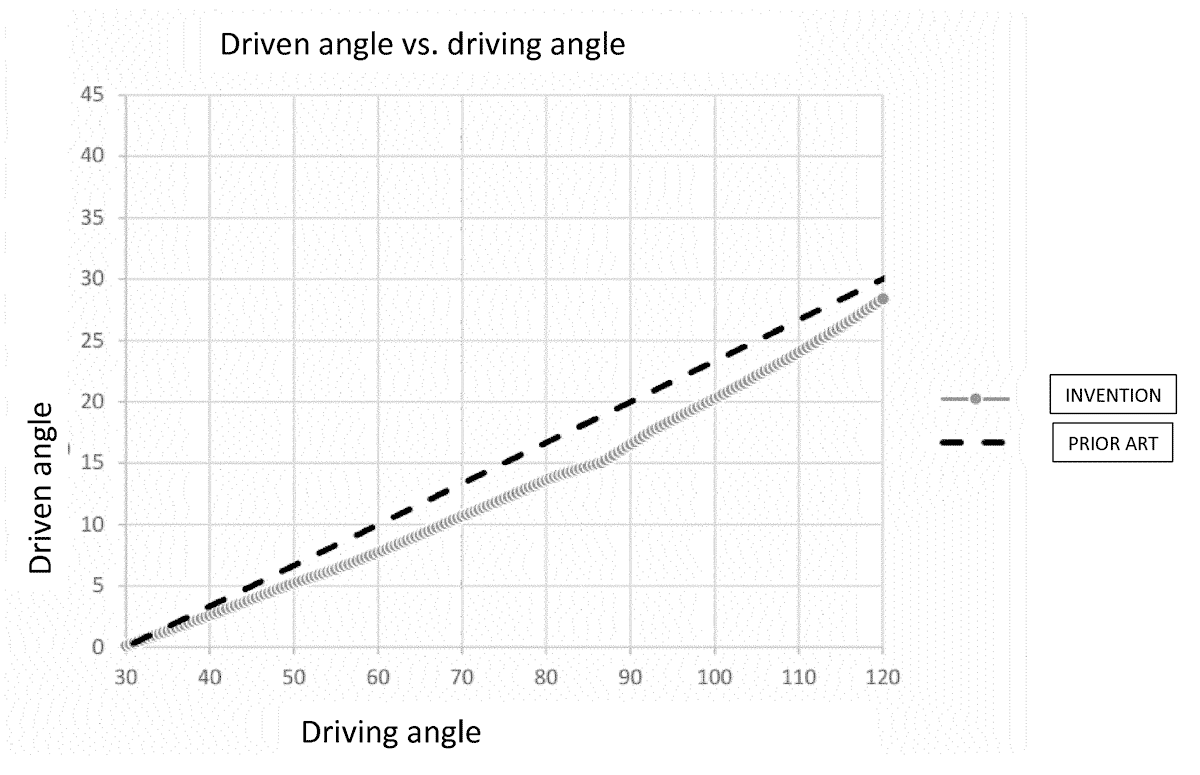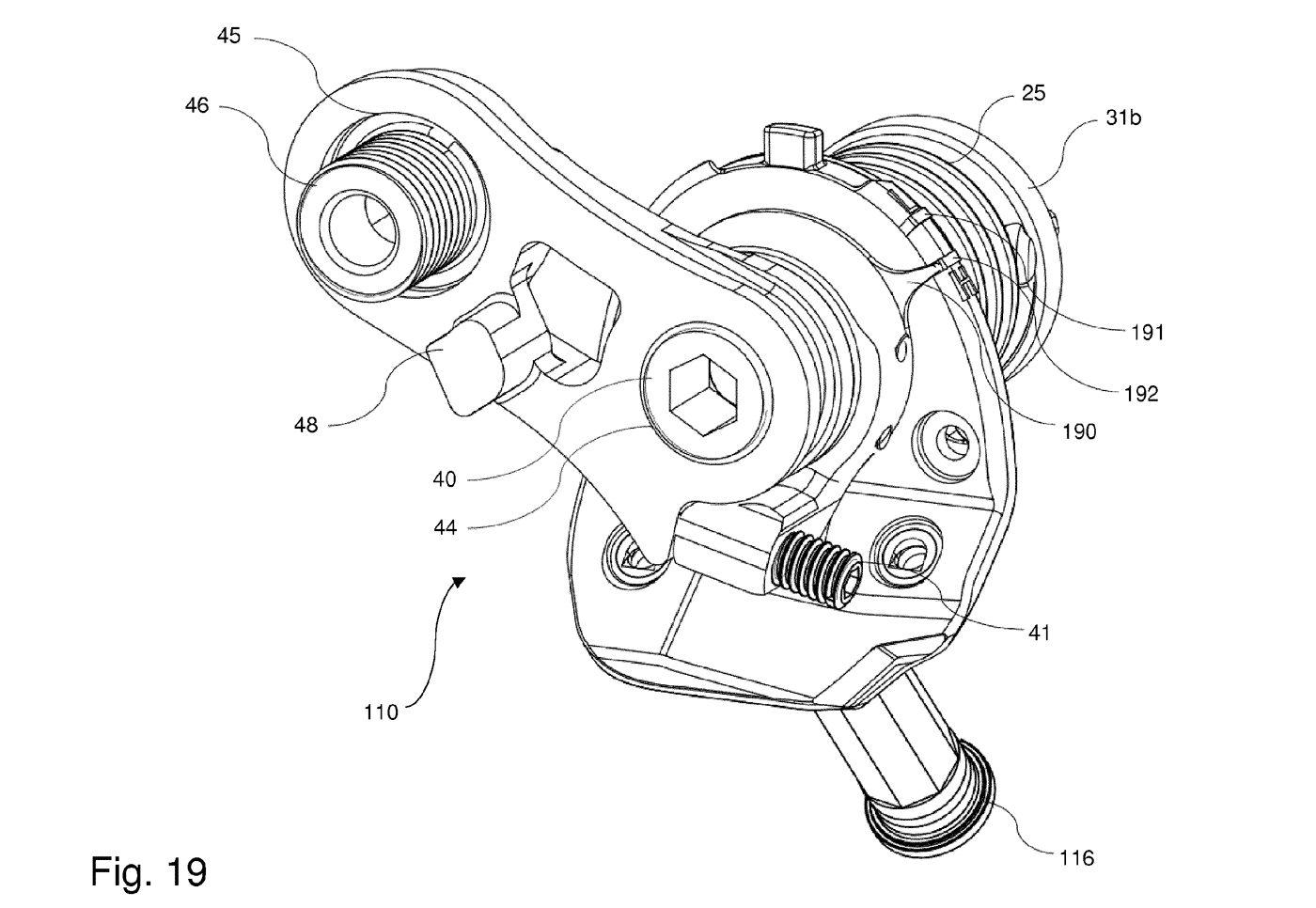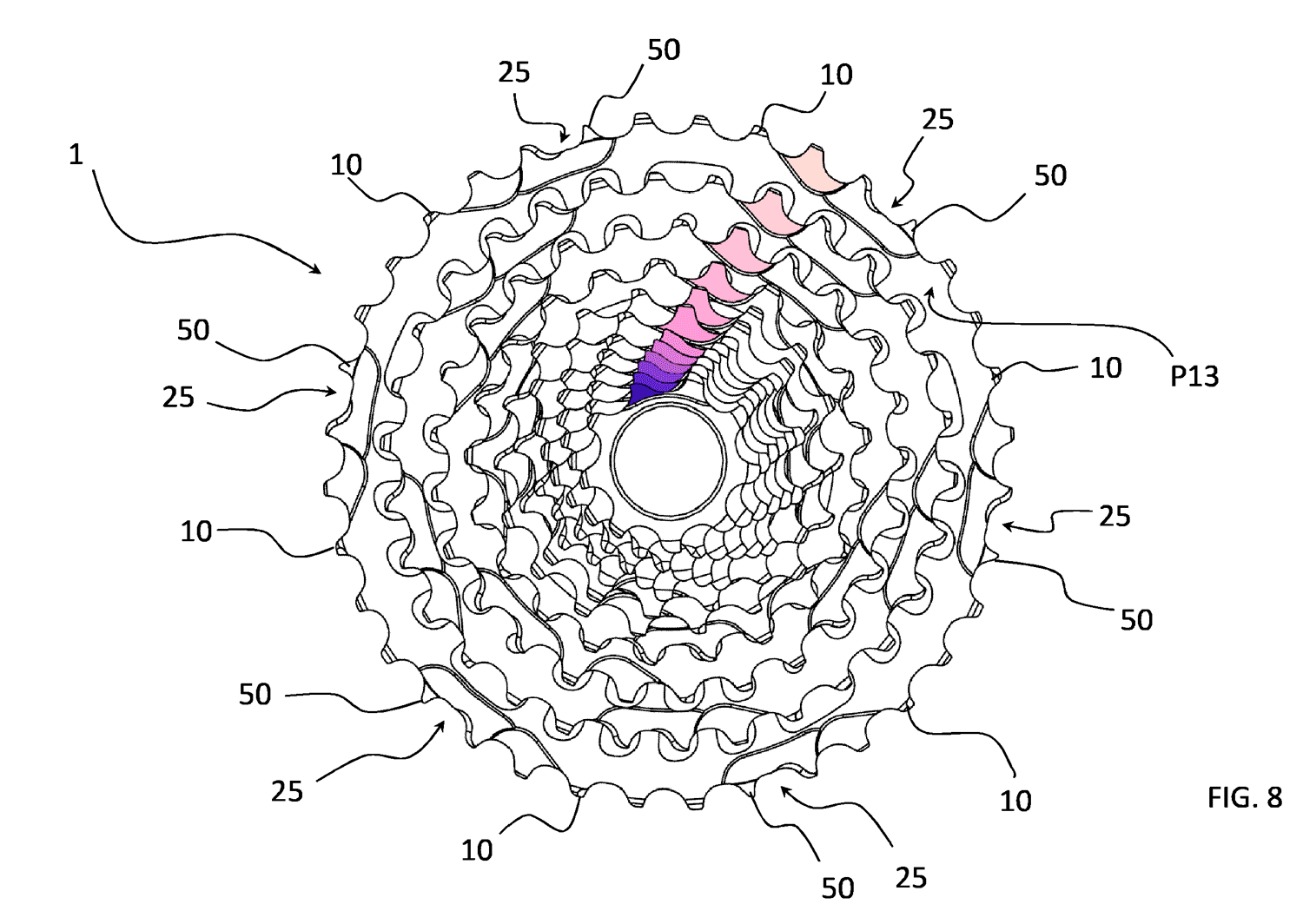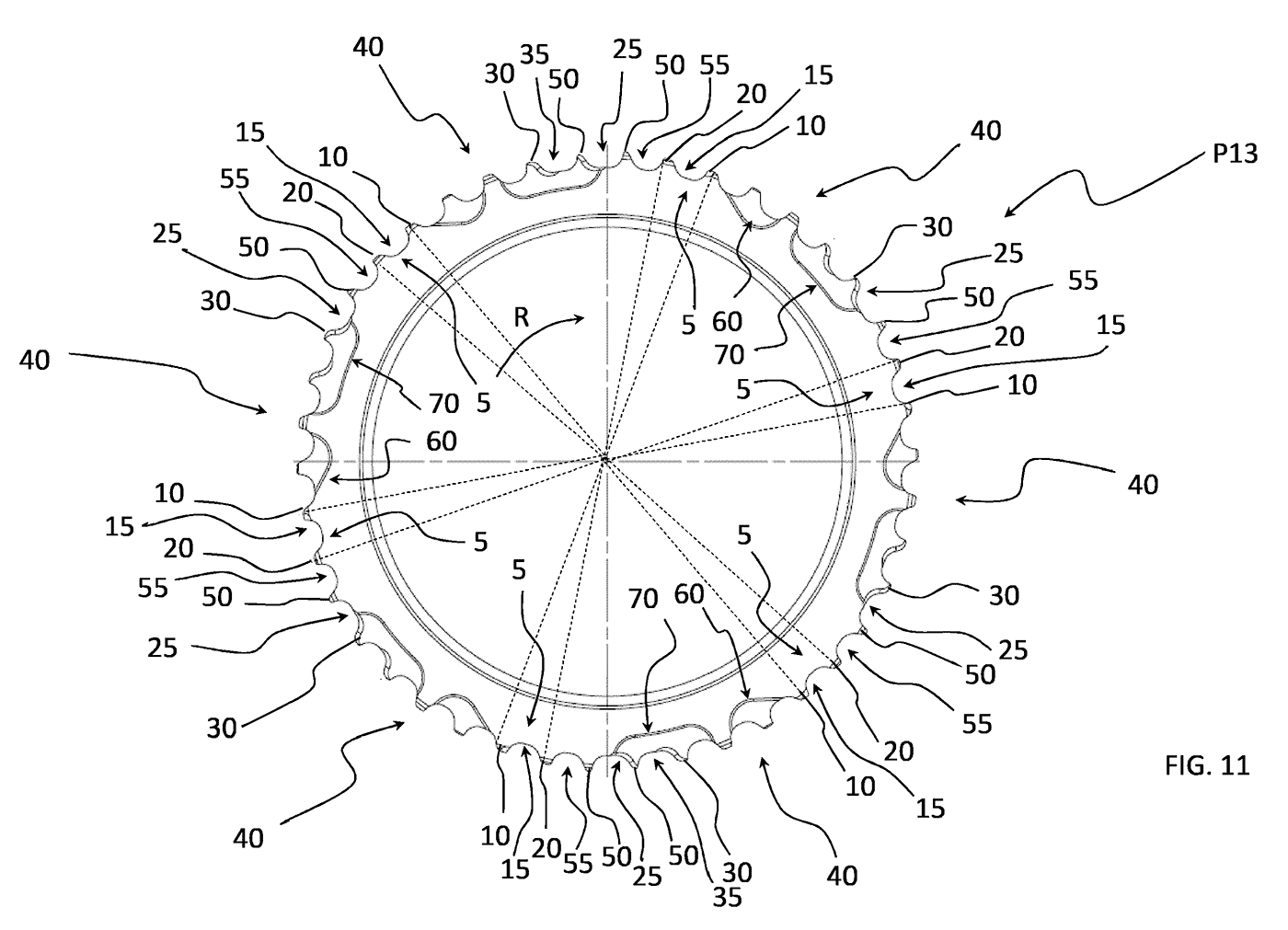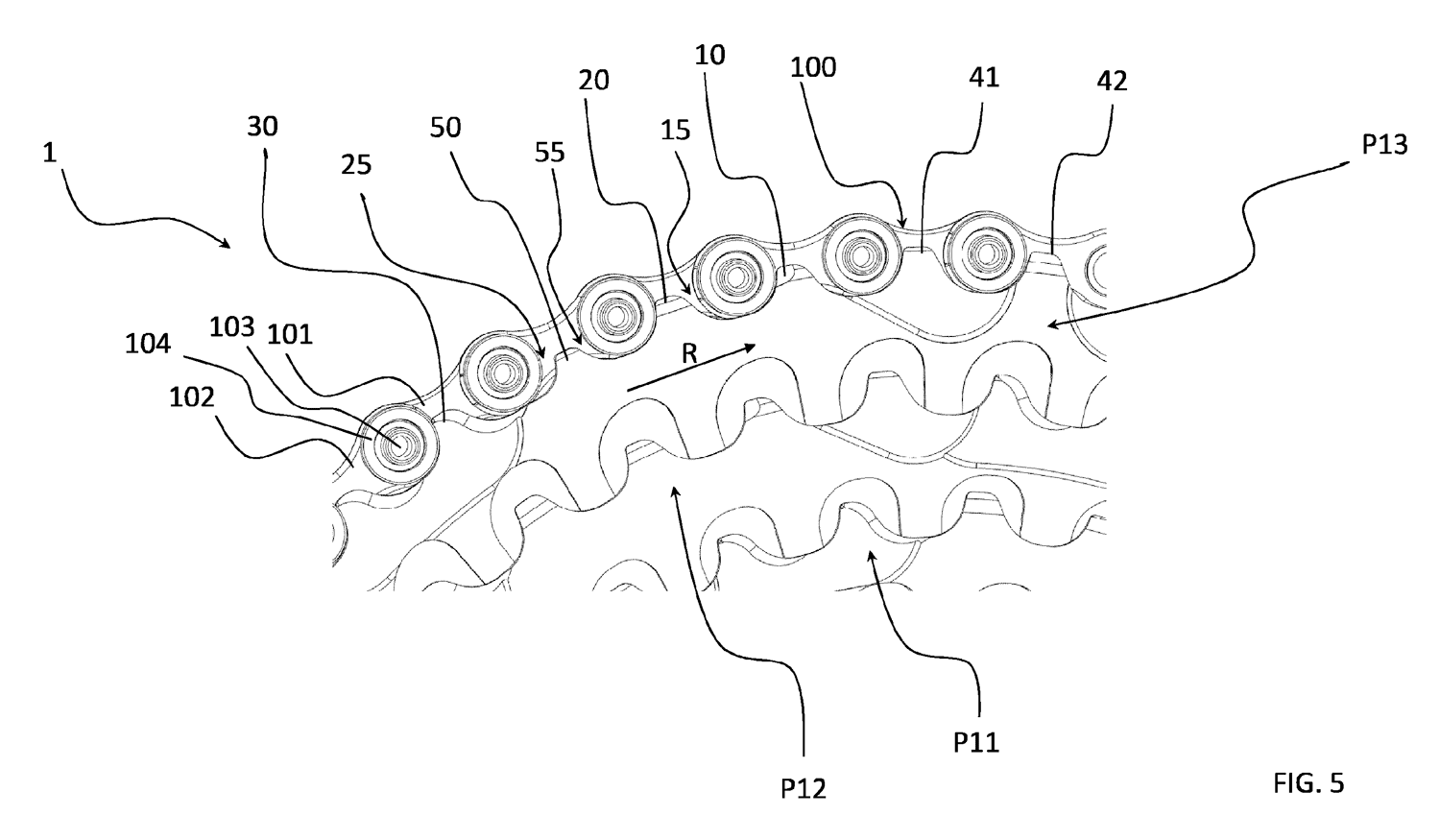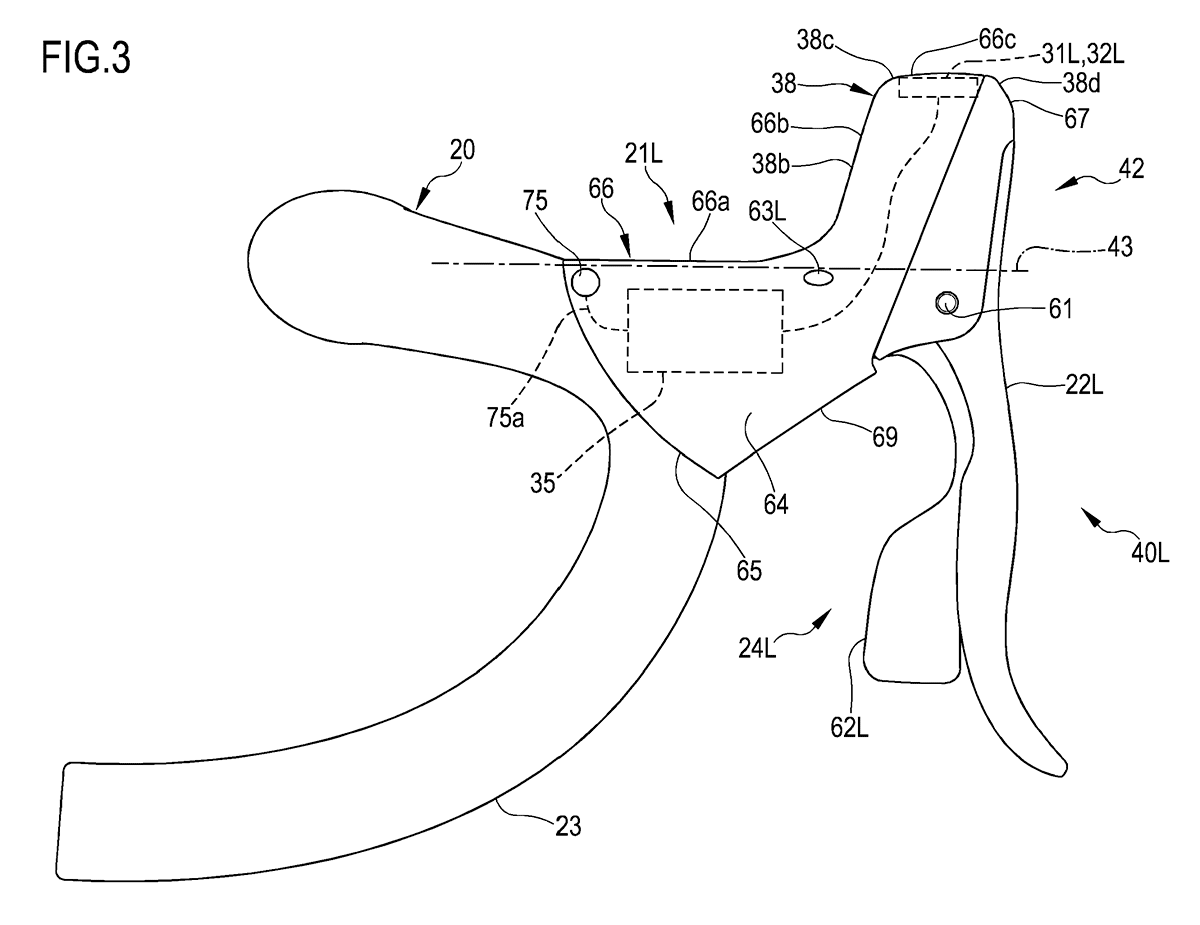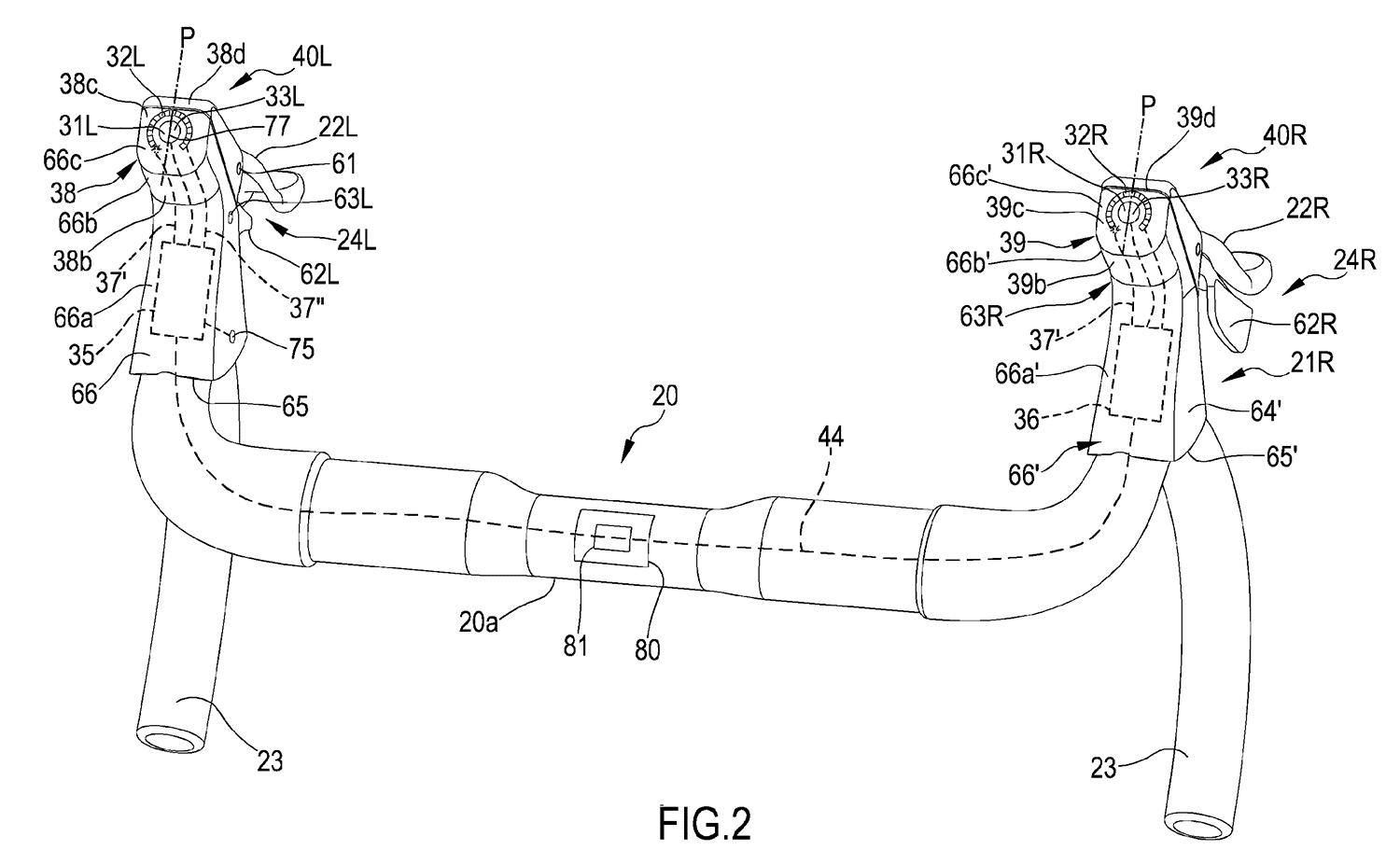We’ve been hearing rumors and catching patents that suggest Campagnolo’s working on a 13-speed drivetrain for some time. Now, a fresh batch of four European patents suggest it’s pretty far along on some very advanced ideas.
They range from a derailleur with a non-linear upper pulley path to a smoother shifting cassette, plus a more versatile EPS electronic shifter design.
All patent drawings and information here were found on the European patent search site, EPO.org. Seriously, EPO.org. I’ll let that sink in for a moment. Now, onto to the tech…
Campagnolo’s adjustable, wide-range rear derailleur
If this design idea comes to fruition, it will be absolutely revolutionary for two reasons:
- Cassette-dependent shift tuning
- A curving, non-linear upper pulley movement path
Let’s start with the latter. Look at your cassette, especially your wide range cassette. While older 11-23 road cassettes formed a nice little cone shape from big to small cog, modern cassettes are way different. Most keep tight 1-tooth jumps for the lower four or five cogs, then progressively increase in 2-, 3- and sometimes even 6-tooth steps.
This wider range gearing introduces a funnel shaped profile, yet derailleurs keep moving their parallelogram (and, thus, the pulley cage) in a straight line between the extremes of the cassette.
This derailleur’s curved movement path allows the upper pulley to more closely track the cassette’s profile, keeping it equidistant from every cog. If you’ve ever over-tightened your B-screw and moved the upper pulley too far away from the cogs, you know how badly that affects shift quality.
Now, with the pulley able to remain closer to every cog, shift performance in the middle of the cassette (you know, those gears we use the most) should be much better.
Notice that they’re not doing this by offsetting the upper pulley far from the cage’s pivot axis, which is what SRAM and Shimano do (to great effect, of course) on their mountain bike derailleur cages. Here’s how they do it…
The patent describes a non-circular gear set, with one toothed sector rotating the B-knuckle (pink), and the other rotating with the pin that connects the main parallelogram portion of the derailleur. As you shift, both pieces rotate and allow a complex, multi-plane movement pattern for the parallelogram and, ultimately, the pulley cage. And you can adjust it…
Customize the pulley path for different cassettes
This chart shows the standard upper pulley path (Prior Art) and the potential path of this new invention. It would be upside down for what would actually happen on the bike, as the upper pulley would closely follow the arc of the cassette’s profile.
But let’s say you have an 11-28 for riding in Florida, but you’re headed to the mountains and install an 11-42 for climbing. If the derailleur is tuned to match the curve of an 11-30 cassette, how could it possibly work with a steeper curve? Simple, change its tune.
Changing the orientation of the main pin (116) and its tooth set (purple) allows the rider to adjust the upper pulley’s path. Externally, they’re showing Low (191) and High (192) indicators, so you’ll know what type of cassette your derailleur is tuned for. The patent filing suggests it only switches between these two settings with no intermediary steps, but we’ll see.
There are slight differences in the approach to tuning the derailleur based on whether it’s a mechanical unit or an EPS electronic unit, but the end result is the same.
What about a clutch?
Well, the word “clutch” doesn’t show up in this patent filing. But there is an “anti-impact spring” (25) that surrounds the main rotational point where the derailleur bolts on to the hanger. This is intended to absorb the forces of an impact, helping the derailleur live to shift another day.
Campagnolo 13-speed cassette concept
Let’s just get right to it: This cassette’s illustration shows 13 cogs. We highlighted it, no need to count. Oh, and the smallest cog is just nine teeth. This particular cluster is a 9-10-11-12-13-14-16-18-21-25-30-36-42, giving you about 467% range just from the cassette. Think that’s enough for a proper 1x gravel bike setup?
Great, but what’s this patent about?
Filed in January 2020 and published in May, their patent for “Bicycle Sprocket and Sprocket Assembly Comprising Such a Sprocket” (seriously) is really about tooth shapes. Specifically, about how they can stabilize the chain and maximize tooth engagement during shifts.
Where some cassettes simply remove a tooth to give the chain a little room to slide into position, Campy’s patent says that removes a critical bit of support. Their solution? Spurs.
The spurs (50) are just smaller teeth. They’re shorter, both circumferentially and radially. The idea is that, on any cog with more than 18 teeth, they could be used to give the chain more bite as it slides onto that cog. And, particularly when the outer link plates are trying to grab the Shifting Tooth. But they’re small enough not to slow down the shift.
Each cog is then divided into two groups of teeth…the “Gear Changing Teeth” (5), which are the thickest, and the shifting teeth (40), which have the shaping. The First Tooth (10) is preceded by an shift ramp (41, below, and shown in color in a previous image) that helps pull the chain up to it from the smaller cog. The other end of the shaped Shifting Teeth section is ramped to facilitate a downshift to an easier cog.
It works out well that the thicker teeth are the ones pulling the chain up to a larger cog. Campy notes that having multiple teeth, including the Spur, in the gear changing area, reduces the load on any one single tooth.
Not only does this increase durability, but ensures strong, crisp shifts in both directions. They also say it helps keep the chain on the intended cog when backpedaling. Some other wide range cassettes we’ve backpedaled on tend to drop the chain down to a small cog (or two), so this would be a welcome improvement.
Not exactly earth shattering, but when taken in combination with the rear derailleur design, Campagnolo may soon have the most refined wide-range shifting on the (gravel) road.
Based on earlier patents (and that 9-tooth cog), we’re guessing these wider range cassettes will use a new mounting interface, and possibly even a new attachment method. Take look at Campy’s potential future cassettes and then hope your favorite wheel brand will offer freehubs for it!
EPS Shifters add buttons…and a screen?
If you’ve ridden Campy’s EPS system, you’ve probably readjusted your hands now and then to avoid an accidental shift on the inboard triggers. We love them, and they work great, but it does take a bit of getting used to if you’re coming from Shimano or SRAM.
In this patent filing, they’re showing what could be a dramatically streamlined button as opposed to a small lever, but it leaves the option open for both.
More importantly, it adds the ability to have additional buttons located on the forward protuberance. They mention a few ways to use them:
- an electric propulsion actuator (e-bike assist levels)
- a saddle configuration adjuster (dropper post)
- a configuration adjuster of a damper (suspension lockout)
- a direction indicator (turn signal)
They provide for left and right buttons (31, 33) that can cycle one way or another, depending on which side you press. So, they could cycle through screens on a display or GPS cycling computer (while also showing the gear selection and other settings), or just be used for different things.
And it’ll have a screen (32). While we anticipate just one button per side, Campy’s showing what look like indicator lights (but mentions a screen) incircling the button. They say it could be used to indicate the motor assist level for an e-bike, which would keep the cockpit gloriously free of a second screen since most drop bar riders are already running a GPS cycling computer.
But for real, can they pleeeease make one of them work my garage door opener?
So, what does it all mean?
All of this is speculation based solely upon on our interpretation of public documents. Campagnolo has not provided any commentary or information for this article.
Nor have they mentioned anything about a new Campy Seatpost. Sorry.
